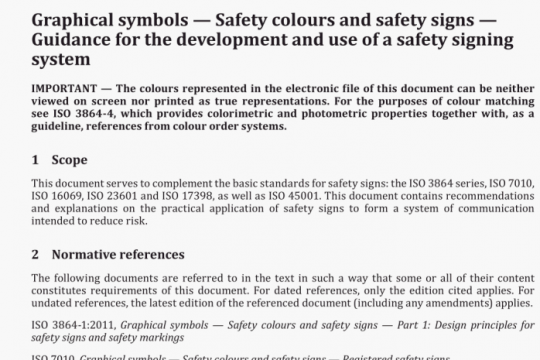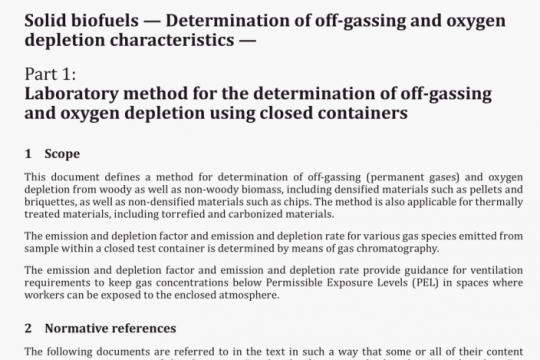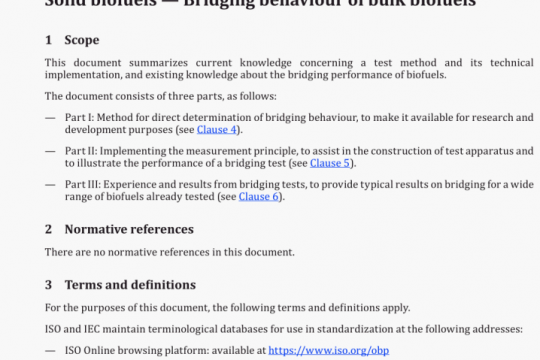ISO 8641 pdf free download
ISO 8641-2008 pdf free download.Aerospace一Self-locking nuts with maximum operating temperature greater than 425 °C – Procurement specification.
4.1 General
The manufacturer shall be capable of continuous production of bolts complying with the quality requirements specified in this International Standard. It is recommended that the manufacturer be certified to a recognized quality management system- The certification authority may be the prime contractor.
The purpose of qualification inspections of nuts is to check that the design and manufacturing conditions of a bolt allow it to satisfy the requirements of this International Standard.
Qualification of the bolts shall be granted by the Certification Authorities in the purchaser’s country, or their appointed representative, who may be the prime contractor.
The purpose of production acceptance inspection of a nut is to check, as simply as possible, using a method which is inexpensive but the most representative of the actual conditions of use, with the uncertainty inherent in statistical sampling, that the bolts satisfy the requirements of this International Standard.
Production acceptance inspections and tests shall be carried out by the manufacturer, or under his responsibility.
4.2 Qualification inspection and test conditions
Qualification inspections and tests (requirements, methods, numbers of nuts) are specified in Table 1. They shall be carried out on:
each type and diameter of nut;
100 nuts selected from a single batch by simple random sampling.
The test programme may possibly be reduced, or qualification of a nut granted, without inspection or testing; any such decision shall be based on the results obtained on similar types and diameters of nuts provided that the design and manufacturing conditions are identical.
The inspections and tests shall be repeated on any nut if the supplier or the manufacturing conditions have changed. Qualification inspections and tests are summarized in Table 2.
4.3 Production acceptance inspection and test conditions
Production acceptance inspections and tests (requirements, methods, numbers of nuts) are specified in Table 1. They shall be carried out on each batch. Nuts from the batch to be tested shall be selected by simple random sampling.
Each nut may be submitted to several inspections or tests.
The nuts to be subjected to destructive inspections or tests may be those on which non-destructive inspection or testing has been carried out.
If a more stringent inspection is deemed necessary, all or part of the qualification inspections and tests may be performed during the production acceptance inspections and testing. In this case, the number of nuts submitted is the same as that submitted for qualification inspections and tests.
Batches declared unacceptable after the production acceptance inspections and tests shall be submitted for re-inspection or testing only after all the defective units have been removed and/or defects have been corrected, In this case, the attribute(s) which caused the rejection shall be verified using a sample of twice the normal size with the same number of defective items acceptable. Production acceptance inspections and tests are summarized in Table 2.
4.4 Use of “statistical process control (SPC)”
Where a characteristic is obtained by a controlled statistical process, the manufacturer has the possibility, in order to declare conformity of the characteristic, of refraining from the final systematic sampling provided for in this International Standard, if he is capable of forma’ly justifying this choice by using ISO/TR 13425 and the standards quoted in it as a basis.
This justification will include the following phases:
analysis of the product’s key characteristics;
analysis of the risks for each implemented process:
— determination of the parameters and/or characteristics to be respected under SPC; determination of the capabilities of each process:
drawing up an inspection plan and integration in the manufacturing process:
drawing up of routes and control charts (ISO 7966, ISO 7870-1, ISO 8258); use of control charts for data consolidation;
determination of the audits to be run and the control to be carried out to ensure reliability of the device.
To be usable in production, this process should have been validated beforehand by the qualifying body, either during the qualification phase, or a postenori according to the case, by analysing the justificatory file and the results of the qualification inspections such as provided for in Clause 5.
5 Technical requirements
The technical requirements of this International Standard are given in Table 1.
They complement the requirements of all other standards or specifications referenced in the definition document of the nut.
NOTE The attention of the users of this International Standard is drawn to the fact that if there is no International Standard specifying the method to be used, a prior agreement is necessary between the user and the manufacturer with respect to the following inspections and tests:
spectrographic analysis or spectroscopic analysis of the material (see 5.1.1);
micrographic inspection of the structure of the material (see 5.1.2);
fluoroscopic inspection of surface discontinuities (see 5.1.3):
— inspection by chemical reagent to determine type of surface coating (see 5.2.2):
tactile inspection or inspection using a profilometer of the surface roughness (see 5.3.2).ISO 8641 pdf download.




